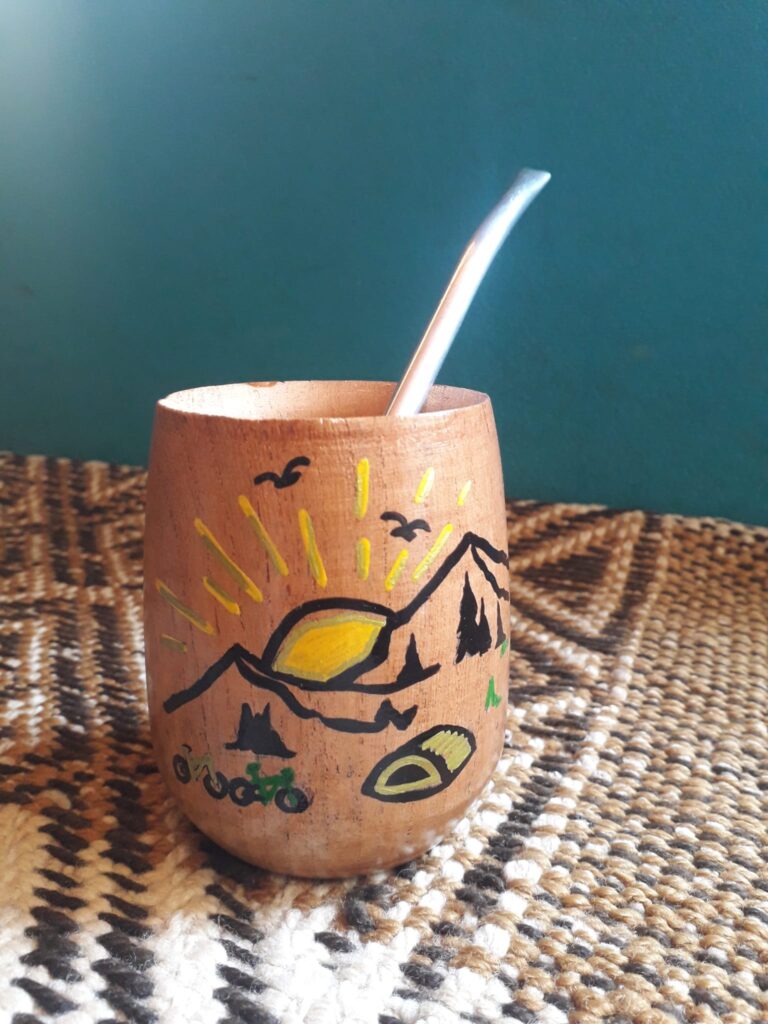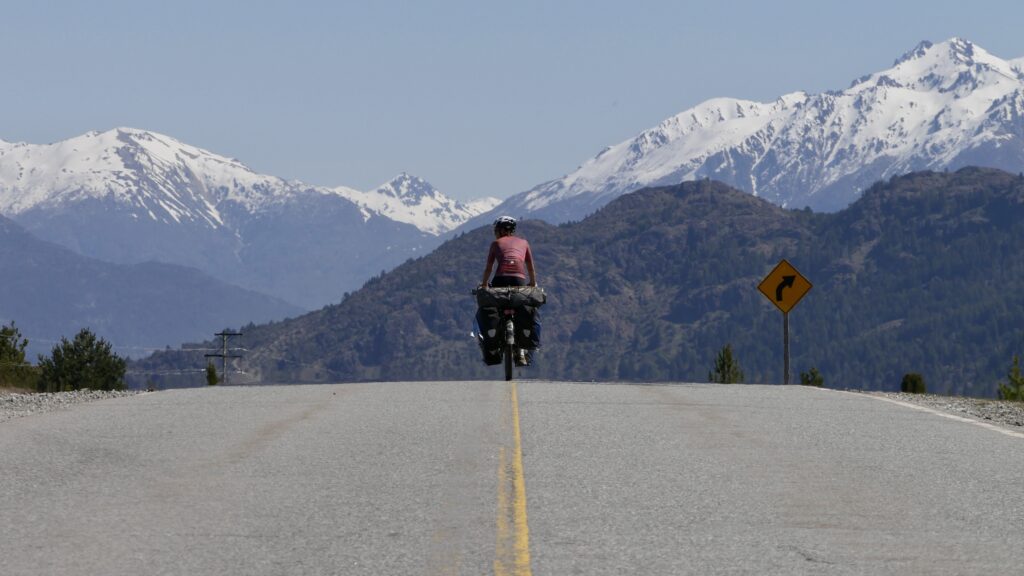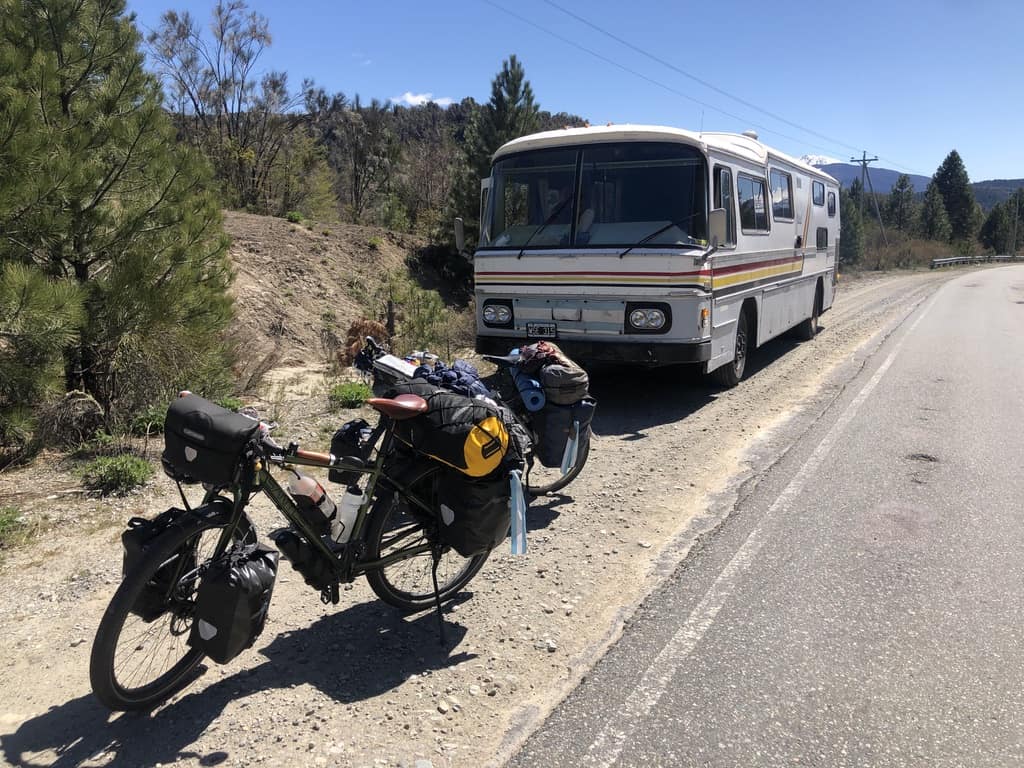
an unexpected visit(or)
Over 900km of asphalt, sand and gravel has passed under my wheels since I wrote the previous blog. That was in Chos Malal, where on the evening before departure Paul and I decided to leave Ruta 40 and explore the “ruta provincial. These roads are generally unpaved and their condition is a surprise at every turn.
We were lucky with the first 100km. The road surface consisted of hard earth and gravel. Unfortunately, the dust and stones flew around our ears as each car passed. Whether they drove around us with a wide curve or almost knocked us off our socks differed from driver to driver. The familiar spray of sand and gravel on the inner roads remains incomprehensible to me. As does the honking. Whether passing from in front or behind, some drivers find it necessary to honk. Often it seems to be their mode of greeting. In some cases, it expresses displeasure at our presence in the lane. Either way, we are startled every time! Especially trucks with their deafening horns often sound them exactly at the moment of overtaking (clearly out of envy). During peak hours on the road, I practice in my mind how I would lash out at these drivers in Spanish and make it clear to them that WE CYCLISTS HAVE JUST AS MUCH RIGHT TO A PLACE ON THE ROAD AS THEY DO! If I only had one chance….
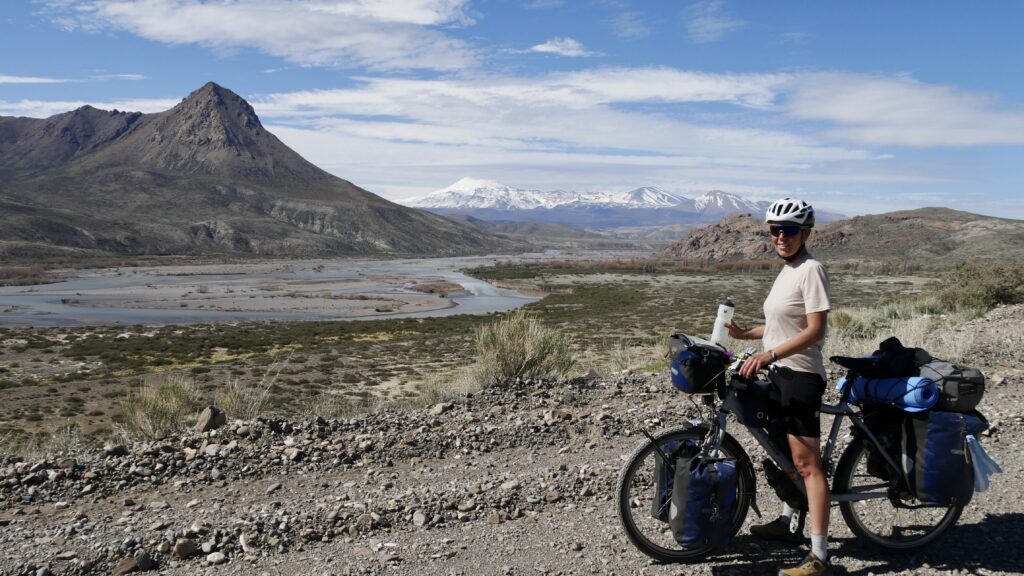
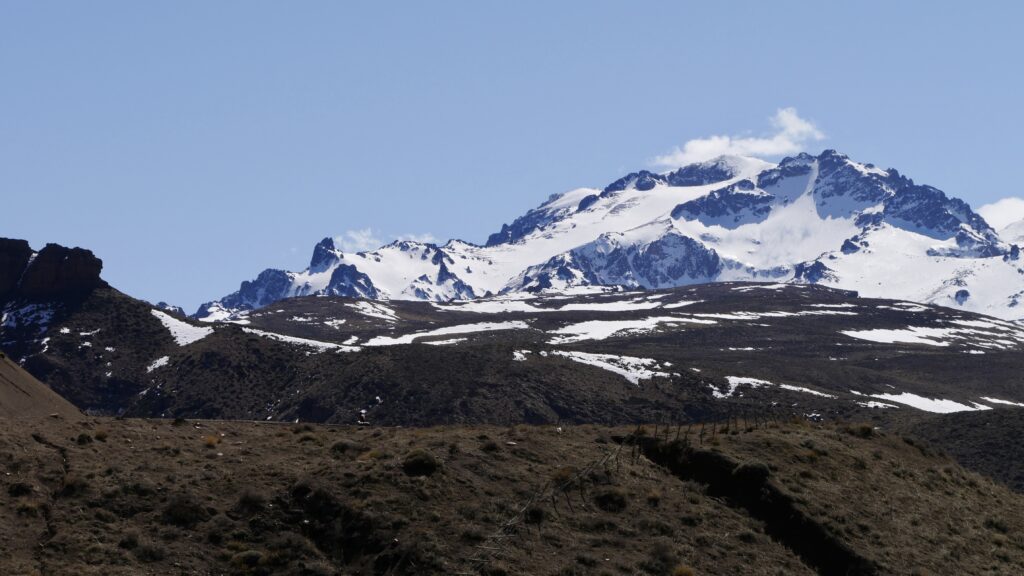

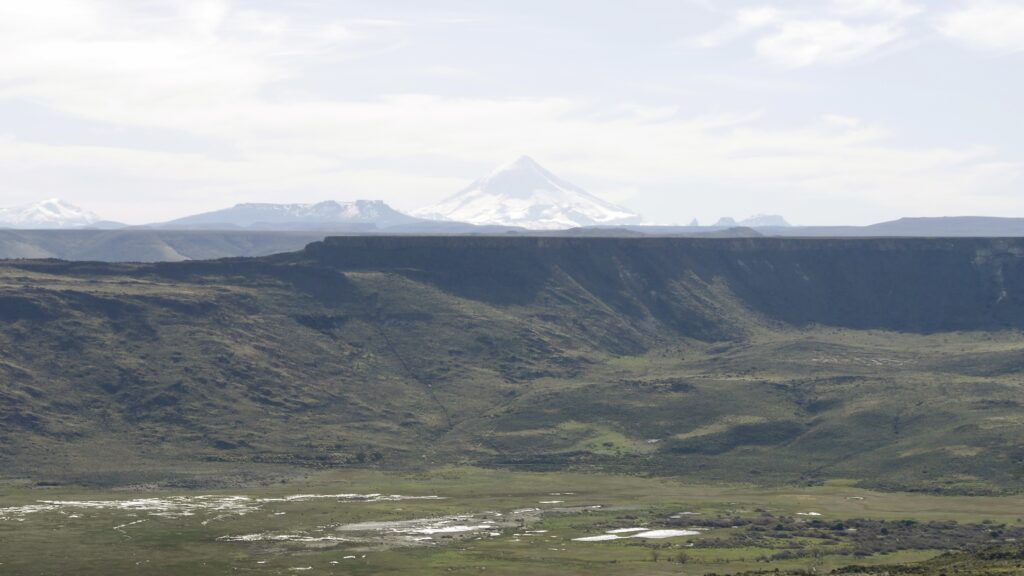
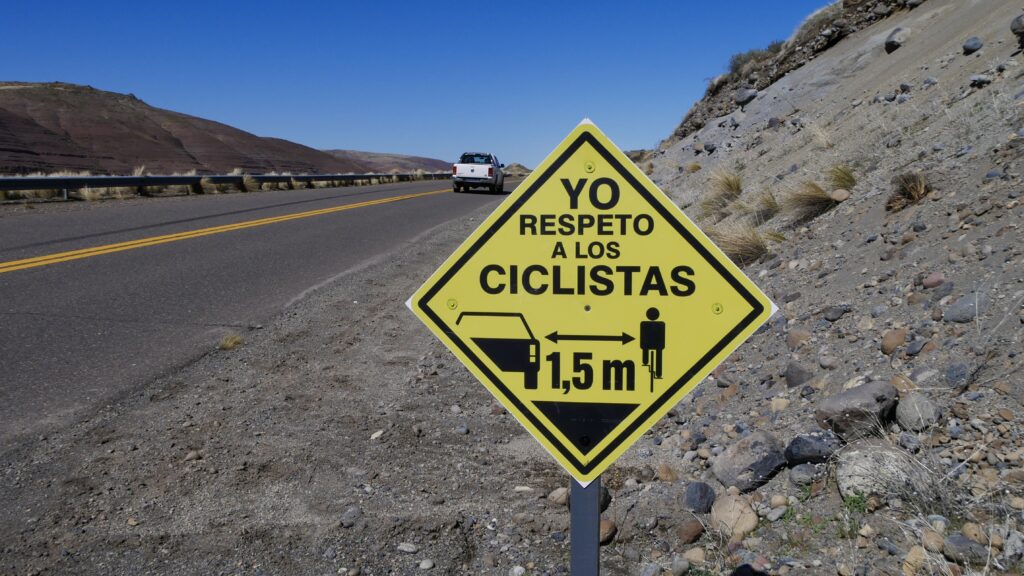
Well, fortunately the crowds are generally not too bad. So back to the ruta provincial. For three days we cycle through a beautiful landscape, surrounded by mountains and overlooking beautiful valleys with small rivers, cows and farms. We camp in the wild. However, finding a spot in these beautiful vast areas is far from a given. Not only the meadows but almost all the land is fenced off. It belongs to someone, someone who at one time or another, grazes his cows or sheep there. Although perhaps(?) no one would crow about it, it does not feel right to lift our bikes over the fences and pitch our tent there against our better judgment. So sometimes it is quite a search for a good camping spot.
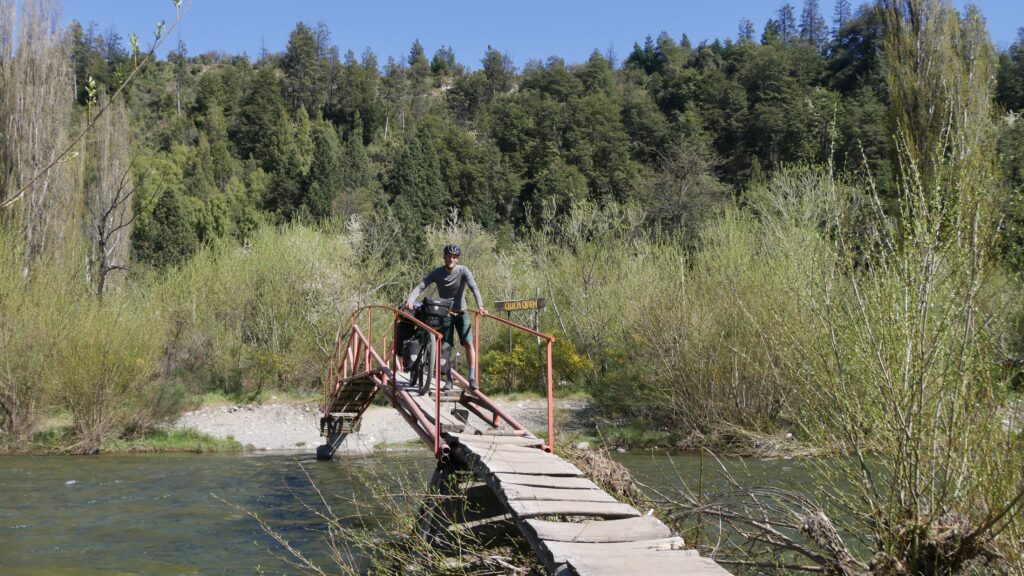
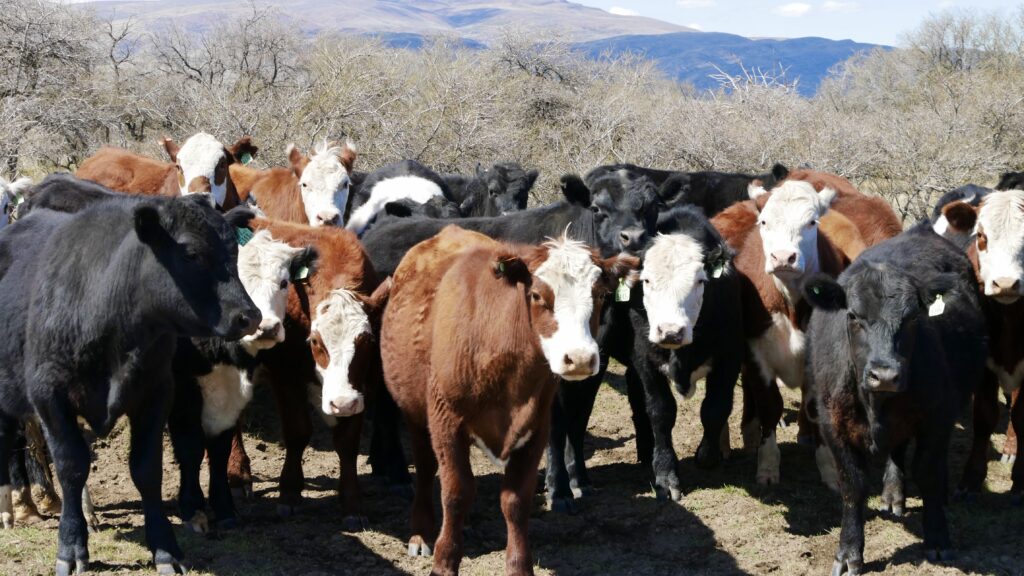
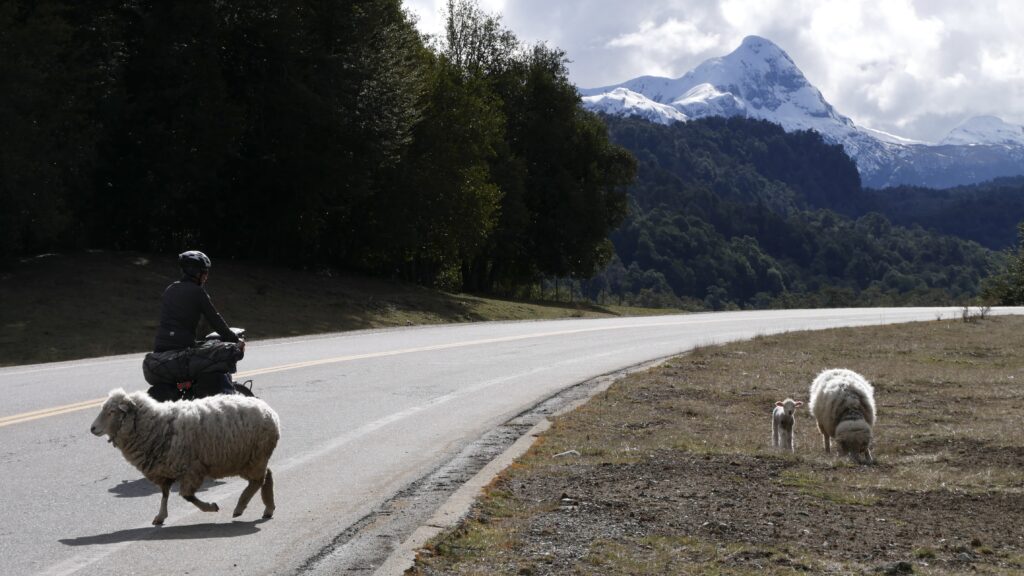
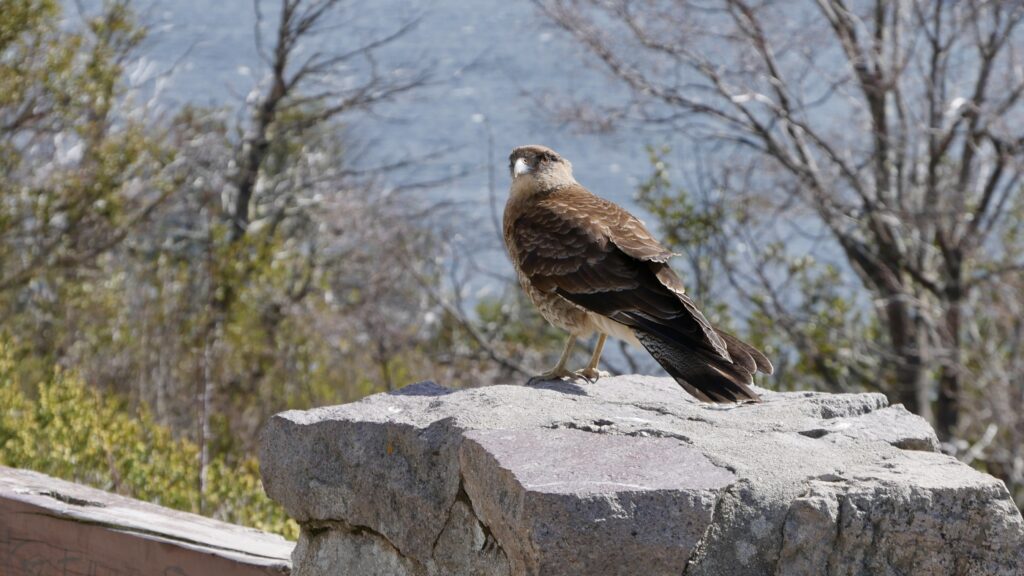
One of these quests ends on a sandy beach (measuring 5 by 3 meters) by the river in the village of Las Coloradas. When our tent is up and running, I see a young woman standing on the waterfront with an old tin can in her hands. Curious, I walk up to her and ask her if it is true that she is fishing. And indeed, in the can is a wooden handle and a wire coiled around it which comes out in the water. Unfortunately, no catch this afternoon. She in turn is also curious about what we are doing here. She tells me to come to her cottage if we need anything, it is nearby.
That evening, as usual, Paul and I are already in the tent around 8:30 p.m., our bellies filled and with heavy eyelids still engrossed in a book. Then suddenly I hear a woman’s voice next to the tent. I bolt into my clothes and crawl out of the tent. There she is, Valeria, in her hands a flat box, “pizza caliente” she says, “for you! She hands the warm box to me. Then she unzips her backpack and takes out a bottle of lemonade, a big pack of crackers and a roll of mentol candies. After a hug and a promise that we will visit her the next morning, she leaves me bewildered and disappears back up the slope toward home in the dark herself. ‘We have hot pizza…..’ I say to Paul.
The next morning we look for her ‘casita madera’, her little wooden house. With a big smile, she appears in the doorway and calls us in. There lies a large piece of dough already cut into pieces and a pan is on the stove for a large portion of ‘pan fritas,’ fried sandwiches. I know that Paul, like me, is enjoying this visit and that we both find it special to “finally” be a guest in the home of an Argentine. In coarse Spanish, we exchange stories at the kitchen table. Among other things, she talks about celebrating Christmas with her family, when everyone gathers at her parents’ ranch and there is music and dancing. She is curious about our traditions…. Enthusiastically, she invites us to come back again for a festive gathering at her parents’ ranch. After a long “second breakfast,” we bid stirred farewell to our first friend in Argentina.
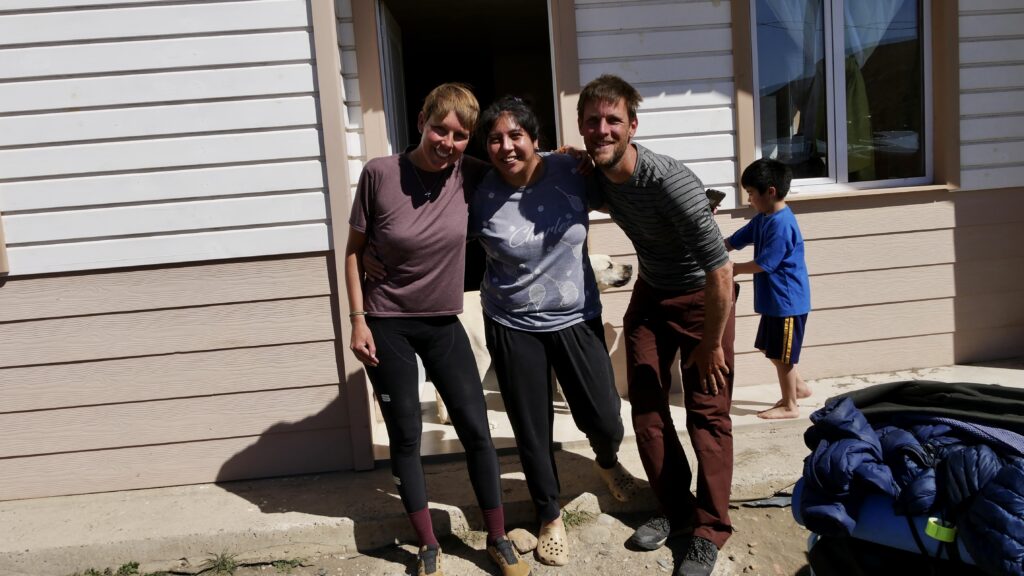
After about thirty kilometers on very bad gravel, we breathe a sigh of relief when our tires hit the asphalt of Ruta 40 again. I pedal to San Martin de los Andes, the start of the “Ruta de los Siete Lagos,” against the wind with Paul in my wake. Cycling is hard on him today. We are clearly not the only ones who want to see the seven lakes and are repeatedly driven onto the shoulder of the road by Argentines who refuse to be slowed down by a couple of Dutch cyclists. We cross San Martin with its “rustic” (new) wooden facades behind which are outdoor stores, chocolateries and a bakery called “Unser Traum. Four kilometers after the village we find the only open (mandatory, because national park) campground, where we pay top dollar for a night of camping. When I return from showering, Paul looks pale. He was already feeling weak today and it’s only getting worse. After a feverish night, we decide to take down the tent in the drizzle and roll back to San Martin in search of a more comfortable place to recuperate.
At the comfortable hostel, Paul only starts to feel worse, and two days later we are at a family doctor’s office. The latter prescribes him antibiotics against a bacterium that seems to be causing the inflammation of his throat and gums. Recovery is slow and a week later we celebrate my birthday in San Martin. Paul, on the mend, surprises me with pastries at breakfast and a unique present! A wooden maté cup (the local “tea”) painted at his request by one of the hostel staff. We have coffee (with another pastry) at our favorite bakery (we are already feeling quite at home in San Martin) and end the day with dinner at the local theater and a full-length music performance. After 4 acts of experimental, arrhythmic and sometimes atonal music, we call it a day. We put a voluntary contribution in the hat provided. Perhaps good for some more harmony lessons….

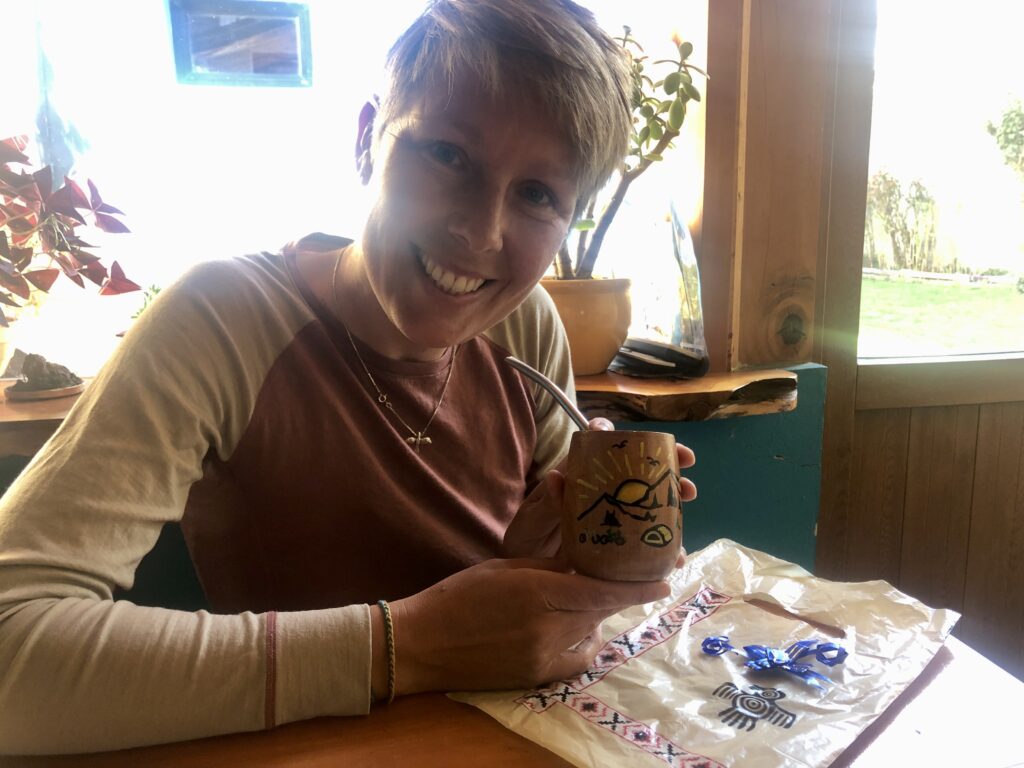
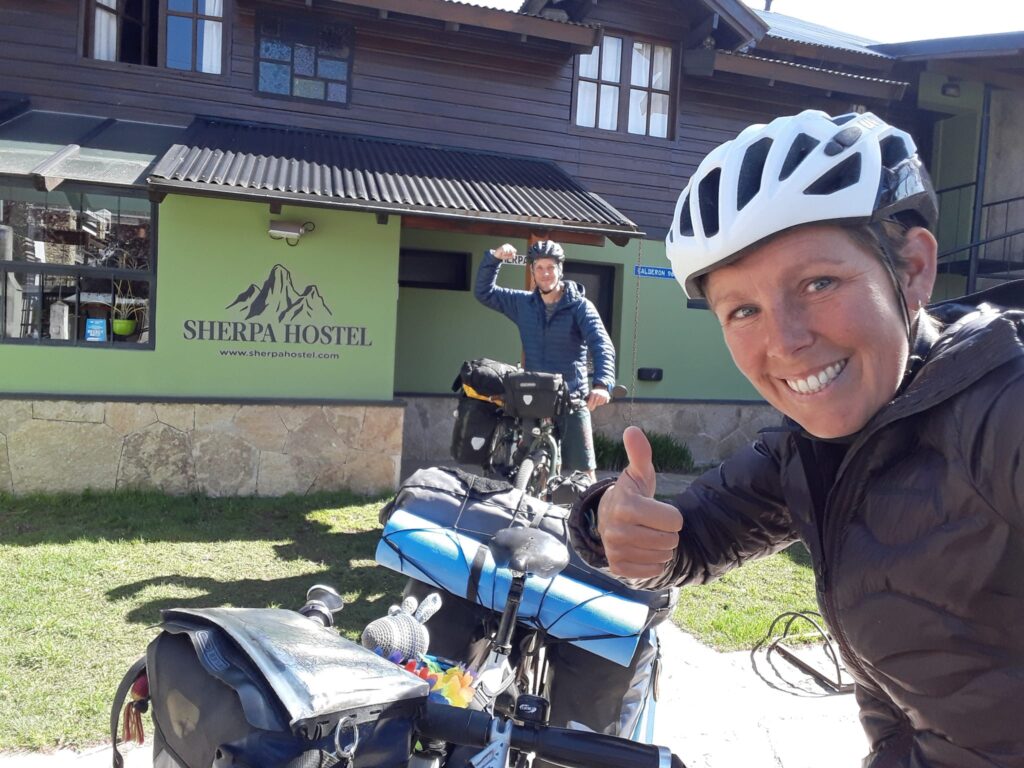
The next day we start the Ruta de los Siete Lagos. The route lives up to its reputation. Not only the lakes but especially the many crystal clear streams that make their way with speed over grey, white and yellow boulders are beautiful. The park has a few campsites where camping is free and without further facilities. The second night we have such a spot to ourselves. We camp by the lake overlooking the snow-capped mountains. Paul heroically takes a bath in the cold water while I build a campfire to warm up by. This is how we like it! Simplicity: water, fire, a pan of pasta with two spoons and, after sunset, a clear sky on which we see hundreds of stars shining.
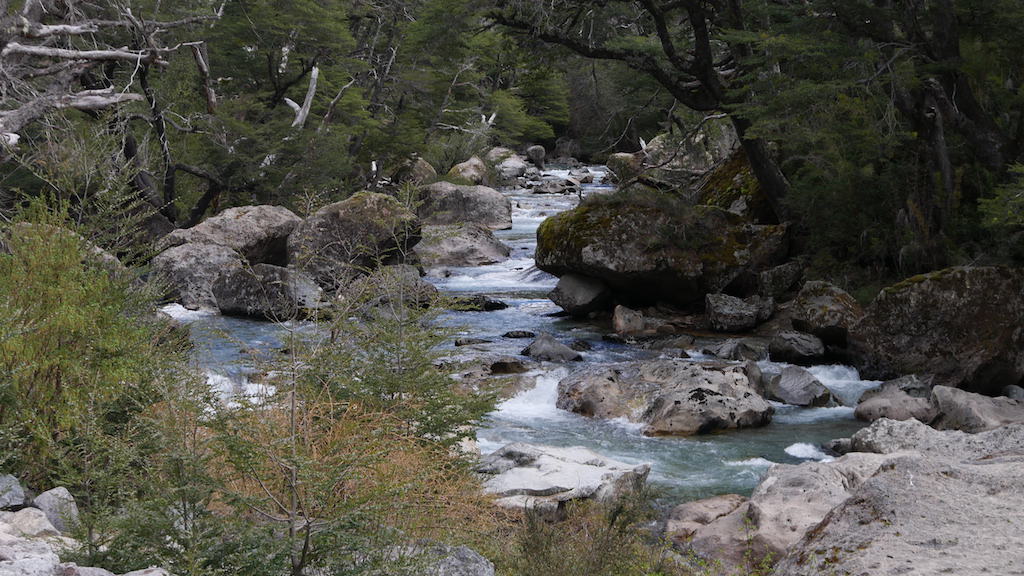
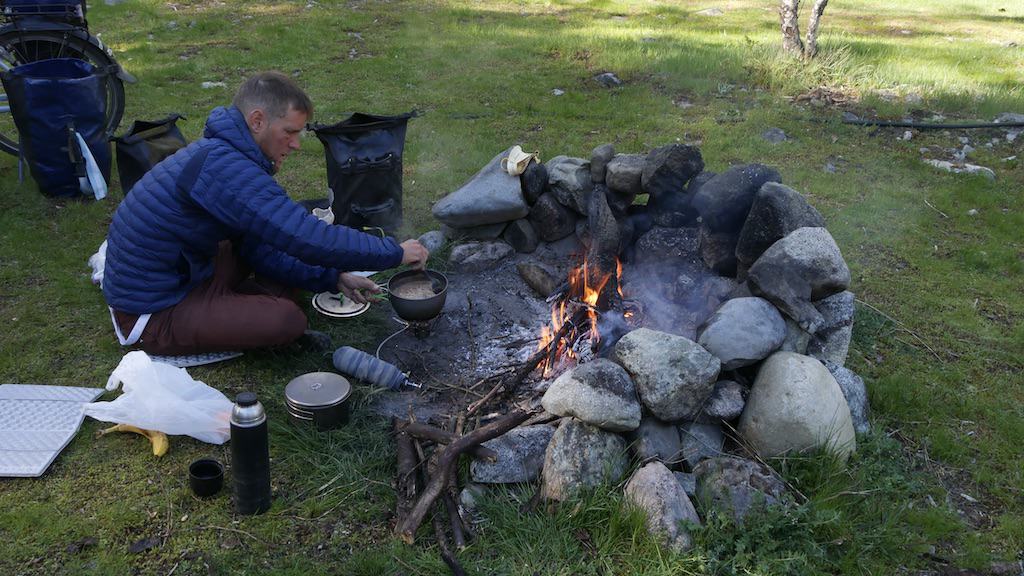
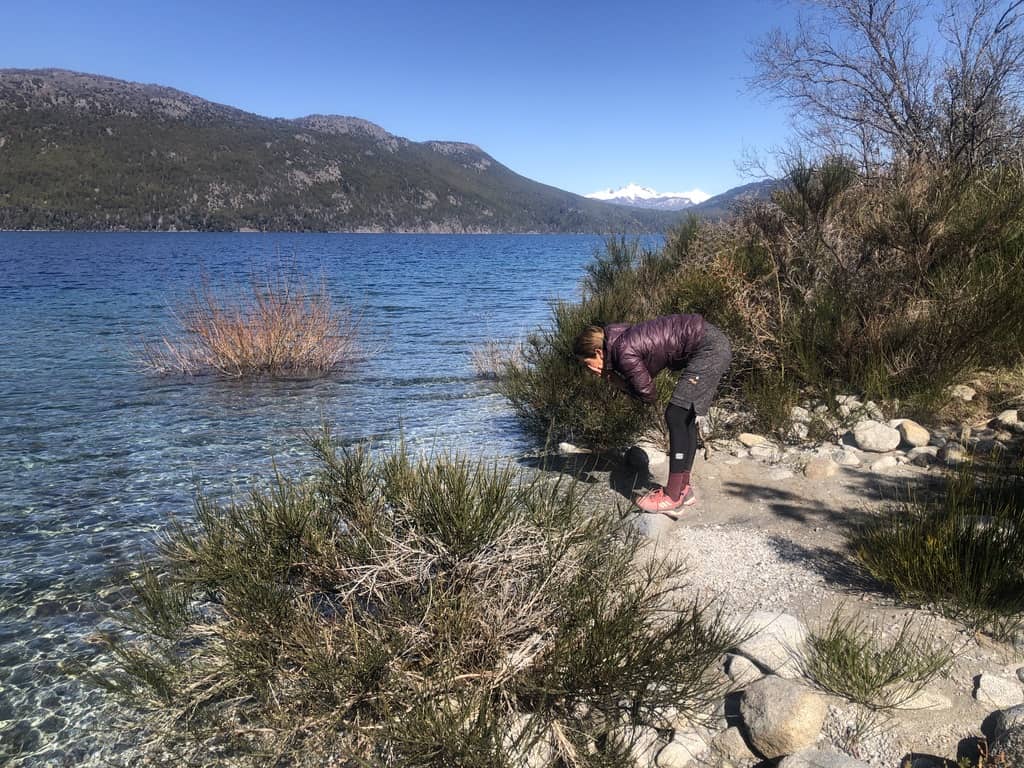

The next day, in Villa la Angostura, Paul gets talking to an older man at a gas station. He turns out to be a Belgian who has lived in Argentina for 60 years. He invites us for coffee at his home. Following his instructions, we cycle along a bumpy dirt road lined with large luxury houses. His house, an older model, can be recognized by its private tennis court. And indeed, that is where we meet Jean-Pierre and his wife Bernadette. A little later, we sit down to a brown and cheese sandwich. Bernadette still speaks quite a bit of Dutch. Jean-Pierre (85 years old) has forgotten it. They don’t want to say much about their past, for which we are somewhat mysteriously referred to Jean-Pierre’s blogspot where he has written down his life story. He tells us about one of his children, a doctor, who, along with a friend, will be heading south by camper in a few days to go mountain climbing at El Chaltén, an essential stop on the route south where we expect to arrive in about a month.
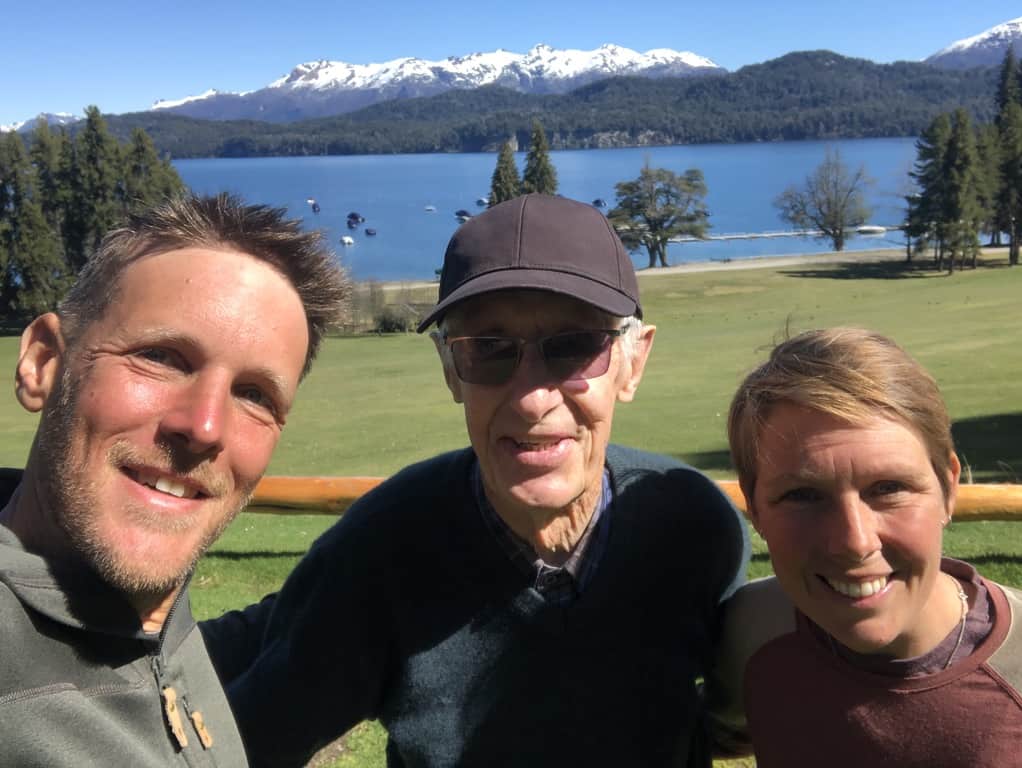
A few days later, when a huge RV races past us with loud honking, I immediately recognize it. And indeed, when we drive around a bend a little later it is parked there. An old bus covered with wood and carpet consisting of three accommodations: the cabin/kitchen/sitting area, a four-person sleeping area and behind it another two-person sleeping area. It looks like a little train. Son Eduardo and friend Diego are waiting for us waving. The water for the maté is already on. Jean-Pierre has instructed the men to take good care of us when they meet us. As we recount the climbs already done and to come, I see Paul’s eyes glistening. He climbed at least weekly in The Hague and has climbed quite a few rock faces outside, but real “mountaineering,” as it is then called, is different and a dream for him to try as well. He envies the naturalness with which this is part of these men’s lives. We exchanged phone numbers and agreed to meet in El Chaltén.
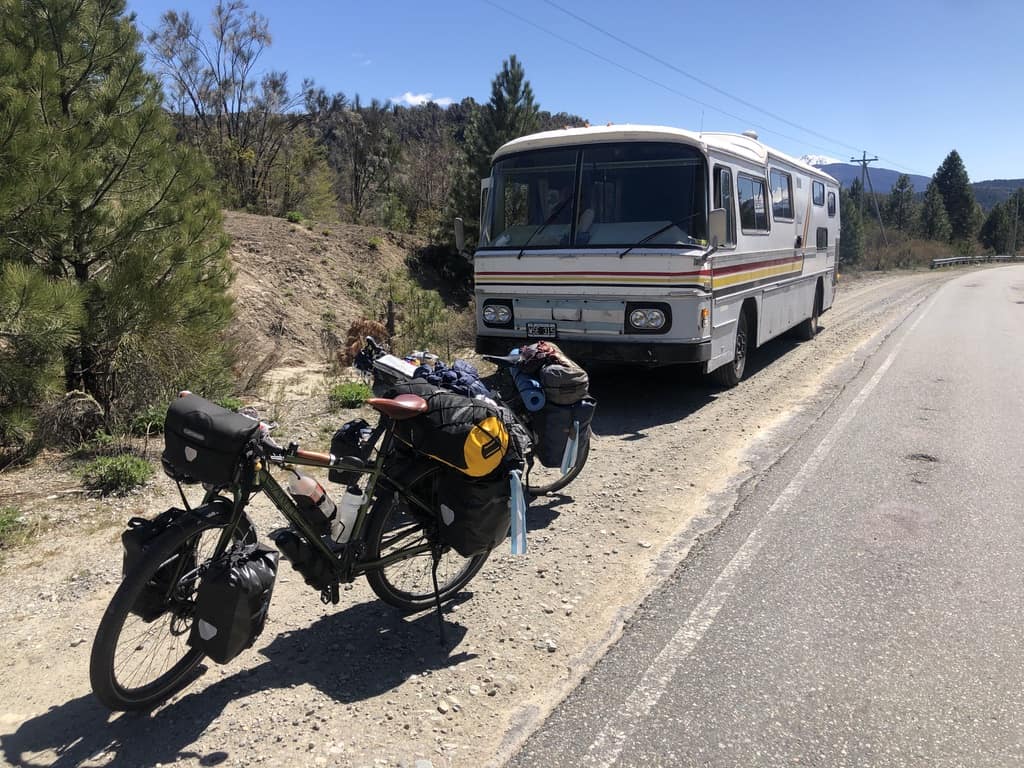
After a tourist stop in Bariloche, where we go up by cable car and visit a market with (mostly) handmade goods, we exchange Ruta 40 for the smaller ruta 71. A road that will take us through another Parque Nacional. Just before we reach our “supply village” for the park we see a roadside sign, “Casa de Ciclistas. We stop, deliberate, hesitate … just look anyway! As we enter the little road, within dozens of meters we already meet the enthusiastic owner and the only other guest, on their way to Cholila for groceries. Immediately they turn around and lead us through the small village in the direction of the “Casa”. Officially, it opens again in November (summer season) but we are also welcome to stay in the house already (free of charge)! The owner, Jorge, is a cycling enthusiast who has cycled through Europe and South America himself. The other guest is Ecuadorian Karen who has been traveling by bicycle in South America for 4 years already (including two years bridging in Peru during the pandemic). There is no hot water due to the winter closure but otherwise everything we could want is there! Electricity (thanks to solar panels), chairs, loft mattresses, a kitchenette, coziness, a village shop and no wi-fi (nice and quiet). We decide to stay three nights. In an easy chair in front of the cottage, I write this blog so I can post it during our provisioning in Cholila before we bike into the park.
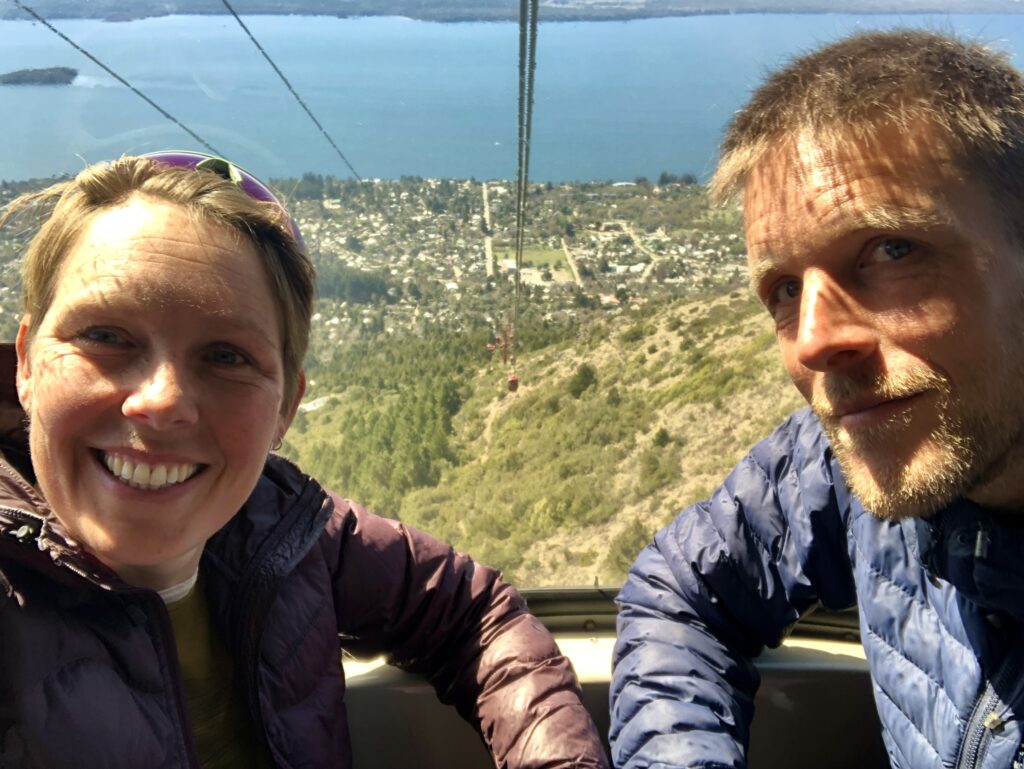

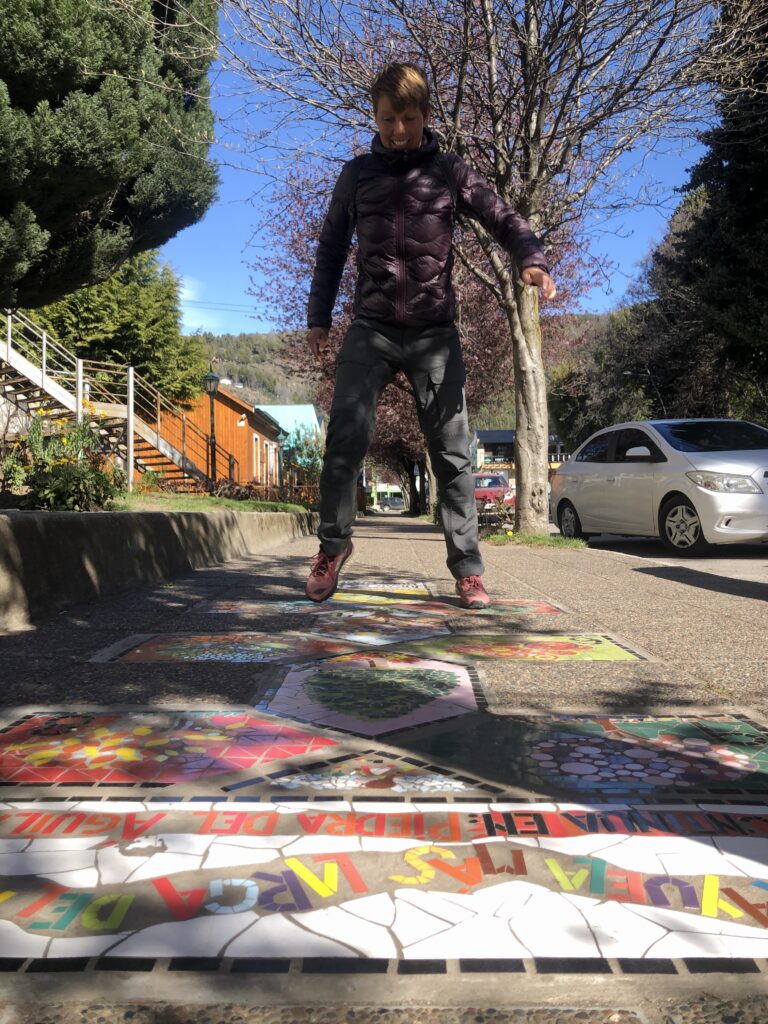
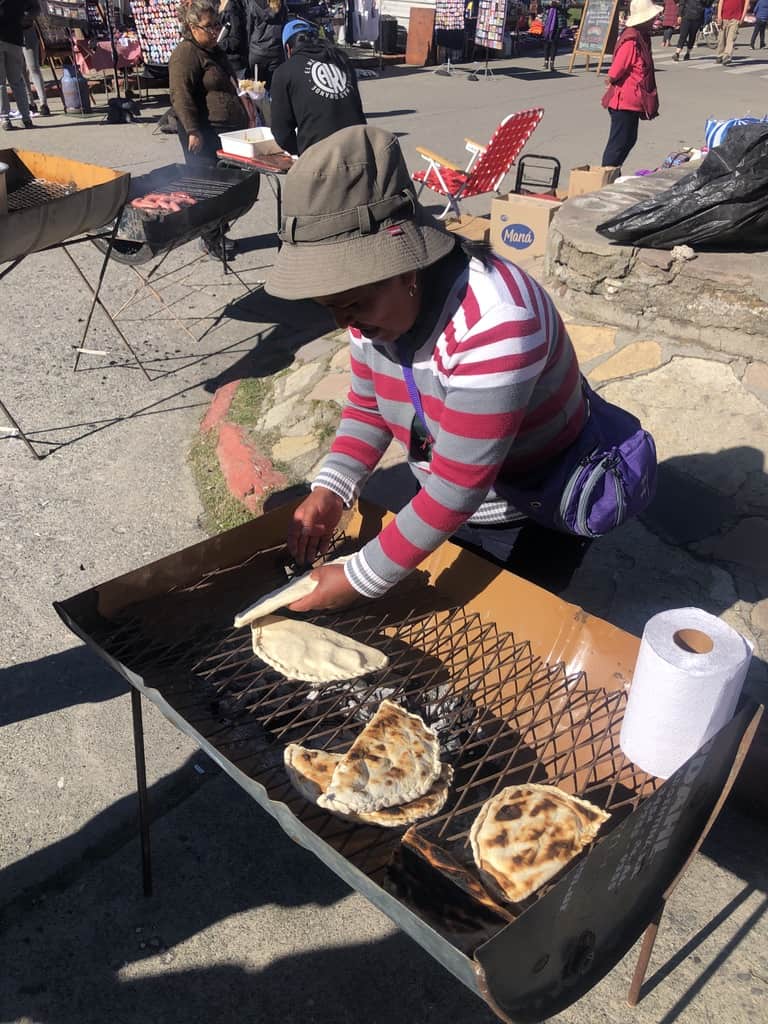
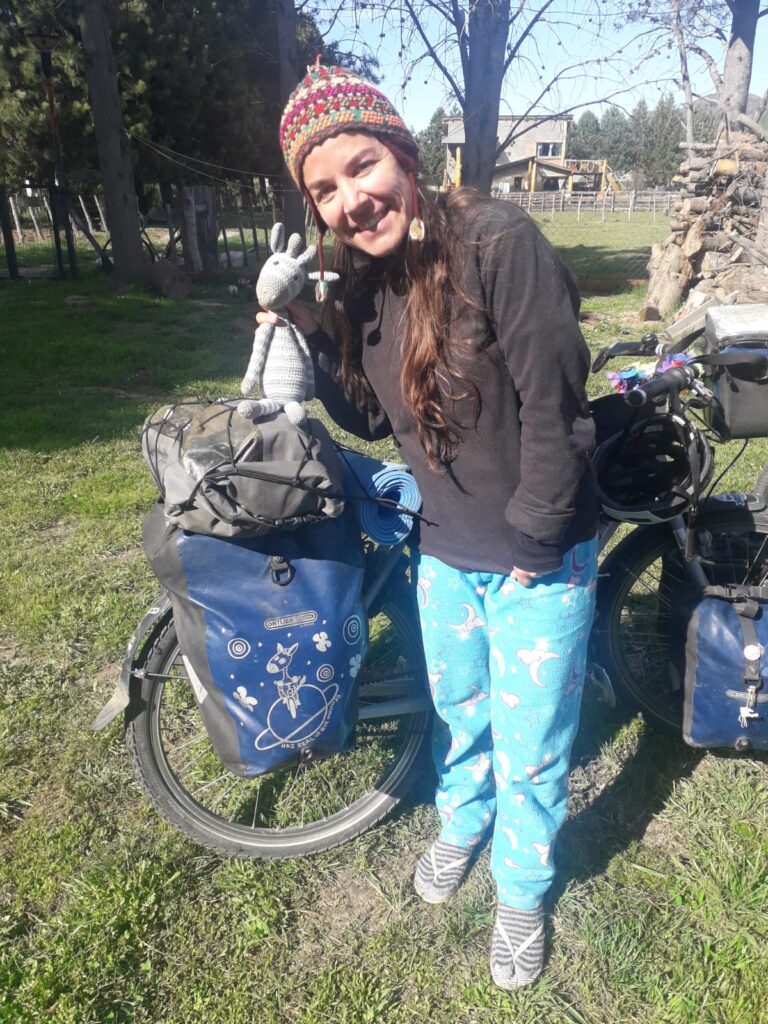

By now we have been on the road for two months! We have gone from the boring, straight, busy main road to Mendoza to being surrounded by mountains with white peaks. Instead of the brown vast steppe, we now look out over green valleys and pine-covered slopes. With spring imminent here, the fruit trees are coming into bloom and little green leaves are sprouting on the deciduous trees. The days are getting longer and warmer with bright blue skies. The nights remain (pleasantly) crisp with beautifully clear starry skies. We regularly confirm to each other how lucky we are to be here, to be here now and to be here together.


World news does not escape us either. With regularity I load the news via wifi and read about the situation in Israel and Gaza, the earthquakes in Morocco and Afghanistan and the floods in Libya and India. Informed of these horrors, I can’t justify why I have the privilege of sitting here on a bicycle while in other places people are fighting or fleeing for survival. The question of what to do with this occupies me. Whoever knows may say.
In the evening in the tent, I read the book ”t Hooge Nest” by Roxanne van Iperen. The chronicled history of two Jewish sisters who risked their lives and the lives of their loved ones as resistance fighters during World War II. I am also reading in stages in “Strangers drowning” by Larissa MacFaquhar, about people who make drastic life choices based on impossible idealism in order to help others. Appropriate reading in times of ethical issues of privilege.
As I type this, Paul is sitting next to me in the grass carving a handle for his sippy cup out of a stick. What a nice calming little task, even to watch. For now I am going to slam my laptop shut yet without an answer to the above consideration. Lying in the grass for a while. What a privilege!
